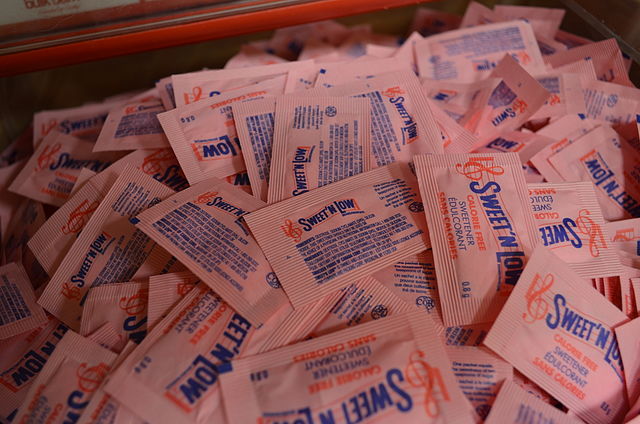Saccharin, also called saccharine, benzosulfimide, or E954, or used in saccharin sodium or saccharin calcium forms, is a non-nutritive artificial sweetener. Saccharin is a benzoic sulfimide that is about 500 times sweeter than sucrose, but has a bitter or metallic aftertaste, especially at high concentrations. It is used to sweeten products, such as drinks, candies, baked goods, tobacco products, excipients, and for masking the bitter taste of some medicines. It appears as white crystals and is odorless.
Sodium salt of saccharin, a white powder
Saccharin, historical wrapping, Sugar Museum (Berlin)
1893 ad
A sugar substitute is a food additive that provides a sweetness like that of sugar while containing significantly less food energy than sugar-based sweeteners, making it a zero-calorie or low-calorie sweetener. Artificial sweeteners may be derived through manufacturing of plant extracts or processed by chemical synthesis. Sugar substitute products are commercially available in various forms, such as small pills, powders, and packets.
Three artificial sweeteners in paper packets, coded by color: Equal (aspartame; blue), Sweet'N Low (saccharin, pink), and Splenda (sucralose, yellow). Other colors used are orange for monk fruit extract[citation needed] and green for stevia.
Cyclamate-based sugar substitute sold in Canada (Sweet'N Low)
Saccharin, historical wrapping, Sugar Museum, Berlin





